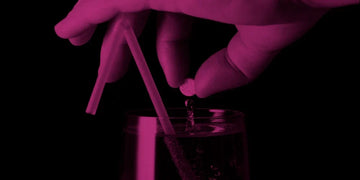Recent drink spiking statistics reveal that 2.2% of UK adults, approximately 1.2 million people, reported drink spiking incidents in 2023 (1). This article offers an in-depth examination of these statistics, revealing the scope of the issue, common locations, demographics of victims, and more. Understanding these figures is essential for raising awareness and preventing future incidents.
Table of contents
Key Takeaways
- Drink spiking is prevalent in the UK, with around 2.2% of adults reporting incidents in 2023 (1), revealing a significant underreporting issue, as only 10% of victims report to authorities (2).
- Young women and LGBTQ+ individuals are disproportionately affected, with 74% of reported victims being women, highlighting the need for targeted preventive measures (3).
- The immediate and long-term effects of drink spiking include severe physical symptoms and lasting emotional trauma, underscoring the importance of public awareness and support for victims.
The Prevalence of Drink Spiking
Drink spiking is alarmingly common, with recent studies indicating a significant increase in incidents across the UK. Approximately 2.2% of UK adults reported having their drinks spiked in the past year alone, translating to roughly 1.2 million individuals (1). National reports further highlight that nearly 1,000 cases were recorded by the National Crime Agency in a single year, underscoring the widespread nature of this crime (4).
Shockingly, around 11% of UK adults believe they have been spiked at some point in their lives (2).
If you are not sure what drink spiking is, check out this blog post: What is Drink Spiking?
UK Adults Reported Incidents
As mentioned, in 2023, 2.2% of UK adults reported experiencing drink spiking within the previous year, which amounts to approximately 1.2 million people(1). This statistic, while already staggering, likely underrepresents the true scale of the issue due to significant underreporting. Survey data reveals that 13% of females and 9% of males in the UK think they have been victims of drink spiking (5).
Despite these numbers, many incidents remain unreported. Only 10% of drink spiking victims report incidents to the police (2), often due to feelings of embarrassment or the belief that their case won’t be taken seriously. This underreporting skews the statistics, making it difficult to fully grasp the extent of the problem.
Common Locations for Drink Spiking
Drink spiking incidents are most frequently reported in public venues, particularly bars and nightclubs. In 2023, the majority of incidents were reported in bars (41%) and clubs (28%). These nightlife venues, bustling with activity, provide the perfect cover for perpetrators. In clubs, women are more prone to being victims of drink spiking, with a rate of 37%. Incidents of drink spiking in bars show a slightly lower rate at 33% (2).
Check out our blog on advice for women to stay safe on nights out
Interestingly, about 19% of drink spiking incidents happen at social gatherings, including house parties, and 9% occur in private residences (6). This highlights that while bars and clubs are hotspots, more incidents in other settings are not immune to this crime. It emphasises the need for vigilance in various social environments.
If you need advice on how to stay safer in bars and nightclubs, you can take a look at this blog post: Bar safety tips
Tip: When going to a nightclub, bar, or other social event, take a drink spike test kit. These are small and easy to carry in your pocket or bag, and can detect whether your drink has been spiked within seconds.
Underreporting Issues
Despite the prevalence of drink spiking, underreporting remains a significant issue. Research indicates that 90% of drink spiking occurrences go unreported to authorities (2). Many victims feel that reporting is pointless, fearful that their experiences will not be taken seriously or that they will face embarrassment. This underreporting creates a substantial gap in the data, making it difficult to fully understand and address the problem.
National statistics suggest that nearly half of reported cases do not make it to the police. The data shows a significant gap in reporting drink spiking incidents, with many victims feeling their experiences are not taken seriously. This highlights the need for greater support and encouragement for victims to come forward.
Immediate Effects of Drink Spiking
When a drink is spiked, the effects can be immediate and severe. Victims may start to feel the effects within 5 to 20 minutes after ingestion.
Understanding these initial symptoms is crucial for recognising and responding to drink spiking incidents promptly.
Physical Symptoms
Victims of drink spiking often experience intense physical symptoms shortly after their drink has been tampered with. Common symptoms include intense nausea and dizziness, making it difficult to maintain balance and coordination. These symptoms can be so severe that victims are rendered incapacitated, unable to defend themselves or seek help.
Memory loss is another alarming physical effect of drink spiking. Victims may struggle to recall events or actions taken during the time they were under the influence of the spiked drink. This can complicate reporting the incident and seeking justice. Around 14% of those who suspected their drink was spiked reported suffering from physical or mental health issues as a result.
For more information on the symptoms, check out this blog post: Common spiking symptoms
Mental Health Impact
The mental health impact of drink spiking can be just as debilitating as the physical symptoms. Short-term confusion is frequently experienced by individuals who have fallen victim to drink spiking, often leaving them disoriented and anxious. This sudden onset of confusion can be terrifying, especially in a crowded or unfamiliar environment.
Victims may also experience:
- Heightened levels of anxiety, paranoia, and difficulty concentrating following an incident of drink spiking.
- Persistent feelings that can lead to longer-term mental health issues, such as social phobias, making it difficult to engage in public or social situations.
- Feelings of embarrassment and shame that persist long after the incident.
Long-Term Consequences
The repercussions of drink spiking extend far beyond the immediate aftermath. Victims often face long-term health and psychological challenges that can significantly impact their lives.
Understanding these consequences requires collective responsibility for providing comprehensive support to victims, as many individuals may find themselves falling victim to various challenges.
Persistent Health Issues
Victims of drink spiking can face significant long-term physical health challenges, including:
- Ongoing health complications, such as stomach problems
- Chronic fatigue
- Cardiovascular issues are linked to substance exposure. Common physical reactions to being spiked, like dizziness and nausea, can persist long after the incident, affecting the victim’s quality of life.
In some cases, victims may need to undergo testing for transmitted diseases if they were spiked with a needle, adding another layer of anxiety and health concern. The need for ongoing appropriate medical care and monitoring further complicates the recovery process.
Emotional and Psychological Trauma
The emotional and psychological impact of drink spiking is profound and often leads to lasting trauma. Victims frequently deal with severe self-blame and heightened levels of distrust in relationships. These feelings can hinder their ability to form new connections and maintain existing ones, isolating them further.
Educational campaigns aim to reduce the stigma around being spiked, highlighting that it is never the victim’s fault. The emotional distress and psychological trauma resulting from drink spiking can lead to long-term mental health issues, requiring a multi-faceted approach to support and recovery.
Demographics of Drink Spiking Victims
Understanding the demographics of drink spiking victims helps in identifying at-risk groups and tailoring preventive measures accordingly. Most incidents occur in public places, especially nightclubs, busy town centres, and areas with many bars and clubs.
This section delves into which groups are disproportionately affected and provides a breakdown of age and gender statistics.
Disproportionately Affected Groups
Drink spiking disproportionately affects certain groups, notably among young women and sexual minorities. LGBTQ+ individuals are notably more likely to report experiencing drink spiking. This disparity highlights the need for targeted preventive measures and support for these communities.
National surveys have shown that gender and sexual minorities are nearly twice as likely to report ever experiencing drink spiking compared to cis-heterosexual individuals. These statistics underscore the importance of addressing drink spiking within broader discussions of safety and inclusion in wider society.
Age and Gender Statistics
As of 2023, the statistics on reported drink spiking victims in the UK are as follows (3):
- 74% of victims are women.
- The average age of victims is 26 years.
- Approximately 10% of women reported having experienced drink spiking incidents.
- Approximately 5% of men reported having experienced drink spiking incidents.
This highlights that young women are particularly vulnerable to drink spiking incidents.
A significant 51% of young women have been affected by drink spiking incidents, indicating that this issue is not limited to just young women but affects a broader spectrum of individuals. These age and gender statistics provide a clearer picture of who is most at risk.
Legal Aspects and Police Involvement
Addressing drink spiking requires a robust legal framework and proactive police involvement.
This section explores the legal penalties for spiking offences and how police handle and respond to reports.
Spiking Offences and Penalties
Drink spiking is considered a serious crime, with offenders facing severe legal penalties. Under the Misuse of Drugs Act 1971, administering a drug to another person without their consent can result in imprisonment for up to 10 years. These stringent penalties reflect the seriousness of the offence and the need to deter potential perpetrators.
Legal consequences are further compounded when drink spiking leads to additional crimes such as sexual assault. The combination of these offences results in even harsher penalties, emphasising the need for strict enforcement and punishment for such heinous acts.
Police Data and Response
Tackling drink spiking is a priority for police forces across the UK. In 2021, the police established Operation Lester to respond specifically to drink spiking incidents. The police received 6,732 reports of drink spiking in the year ending April 2023 (3), highlighting the scale of the problem.
When a report of drink spiking is made, police take detailed information and may collect urine samples to test for drugs. These tests can detect over a hundred different types of drugs, and substances can remain in the body for up to 7 days after the incident. Prompt reporting helps law enforcement gather evidence, increasing the chances of a successful prosecution.
Preventive Measures and Public Awareness
Preventing drink spiking requires a collective responsibility effort from venues, authorities, and the public. This section discusses the responsibilities of venues and the importance of public awareness campaigns.
A good way to test if you have been spiked is by using Spikestixx. This is a biodegradable and easy-to-use strip that you dip in your drink, and it tests for commonly found drugs like GHB, ketamine, and Rohypnol.
Venue Responsibilities
Bars and clubs play a crucial role in preventing drink spiking incidents and ensuring patron safety. Venues are encouraged to train staff to recognise the signs of drink spiking and act quickly to prevent incidents. Implementing security measures, such as surveillance and monitoring of patrons, is vital for venues to deter drink spiking.
Staff training programs help employees recognise spiking signs and provide assistance. Enhancing security through measures like increased CCTV coverage can deter spiking incidents, with police forces collaborating with local venues to bolster these efforts.
Public Awareness Campaigns
Public awareness campaigns are essential in educating individuals about the risks of drink spiking and how to protect themselves. Organisations like charity Drinkaware conduct campaigns to inform individuals on how to safeguard against drink spiking, emphasising the importance of monitoring drinks and reporting suspicious behaviour with the Drinkaware monitor.
These campaigns often promote the use of tools like drink covers to prevent spiking. CCTV is the most common measure against drink spiking, used in 68% of bars and clubs surveyed, while staff training is implemented in 64% of establishments as a key measure.
By raising awareness and educating the public, these initiatives aim to prevent drink spiking and reduce its occurrence of drink spiking significantly.
Reporting Drink Spiking Incidents
Reporting drink spiking incidents is crucial for taking action against perpetrators and preventing future incidents. Knowing the steps to take if you suspect your drink has been spiked and understanding the importance of reporting can make a significant difference in addressing this issue.
Steps to Take if Spiked
If you suspect that your drink has been spiked, it’s crucial to stop drinking immediately and seek assistance from someone you trust. Contacting emergency services for medical assistance is essential, as they can provide the necessary care and collect evidence if substances are still in your system. Educational initiatives often include information on recognising the signs of drink spiking and the importance of reporting incidents.
Additionally, informing venue staff can help them take immediate action to prevent further incidents and assist with identifying the perpetrator. Reporting the incident resulted in the police gathering evidence and increasing the chances of a successful prosecution.
Importance of Reporting Cases
Public awareness initiatives emphasise the importance of reporting drink spiking incidents to ensure victims feel confident reporting their experiences and receive proper support and justice. Victims who report incidents can receive critical support, which can lead to justice for their experiences. Encouraging a higher reporting rate can significantly impact future prevention and prosecution of drink spiking cases.
A significant 82% of victims would report incidents if spiking were explicitly illegal, highlighting the need for clear legal definitions and robust enforcement. Reporting cases not only helps in bringing perpetrators to justice but also contributes to a broader understanding of the issue, aiding in the development of more effective preventive measures.
Research and Studies on Drink Spiking
Understanding the scope and impact of drink spiking requires comprehensive research and studies. This section delves into notable studies and national reports that shed light on the prevalence and effects of drink spiking.
Anglia Ruskin University Study
The Anglia Ruskin University study explored five key areas, including personal experiences and the effectiveness of drink testing kits. Findings from 2023 revealed that drink spiking occurred significantly more than ‘needling,’ by a factor of eight. This research highlights the need for greater education and preventive measures to tackle the issue of drink spiking.
The study’s results emphasise the importance of ongoing research to understand the full extent of the problem and develop effective strategies for prevention and response. By analysing data and trends, researchers can provide valuable insights that inform public awareness campaigns and policy decisions, as highlighted in research published today. This report analysed data to support these findings.
National Level Reports
National-level reports serve as a critical resource in understanding the prevalence and impact of drink spiking in communities across the country. Recent data indicates that approximately 1 in 10 adults in the UK have reported experiencing drink spiking at some point in their lives. Organisations like Drinkaware highlight the need for increased awareness and preventive measures to combat drink spiking, as emphasised in various national-level Drinkaware studies.
The implications of these national reports stress the importance of ongoing education and protective measures to safeguard individuals from potential harm related to drink spiking. By compiling and analysing comprehensive data, these reports provide a foundation for developing targeted interventions and policies aimed at reducing the incidence of drink spiking.
Summary
Drink spiking remains a pervasive and deeply troubling issue that affects millions of individuals each year. From the immediate physical and mental health impacts to the long-term emotional and psychological trauma, the consequences of drink spiking are severe and far-reaching. Understanding the demographics of victims, the common locations where incidents occur, and the underreporting issues helps in formulating effective preventive measures and support systems.
Venues, authorities, and the public must work together in addressing this crime. By raising awareness, encouraging reporting, and implementing robust legal and preventive measures, we can make significant strides in reducing the incidence of drink spiking. Let us all play our part in ensuring safer social environments for everyone.
Frequently Asked Questions
What immediate steps should I take if I suspect my drink has been spiked?
If you suspect your drink has been spiked, stop drinking immediately, seek help from someone you trust, and contact emergency services right away. It's crucial to inform venue staff and report the incident to the police for your safety.
How common is drink spiking in the UK?
Drink spiking is relatively common in the UK, with studies showing that approximately 2.2% of adults, or around 1.2 million people, reported experiencing it in the past year. This highlights a significant and concerning issue that affects many individuals (1).
What are the common locations where drink spiking occurs?
Drink spiking commonly occurs in public venues, especially bars and clubs, which account for 64% of reported incidents. It's vital to remain vigilant in these environments.
Why is drink spiking often underreported?
Drink spiking is often underreported because victims may feel that reporting is futile, fear embarrassment, or doubt that their cases will be taken seriously. This leads to a significant lack of awareness and action surrounding the issue.
What are the long-term consequences of drink spiking?
Drink spiking can lead to long-term physical health problems, mental health challenges, and significant emotional trauma for victims. It's crucial to acknowledge and address these serious consequences.
SOURCES
1. Drinkaware
https://www.drinkaware.co.uk/research/research-and-evaluation-reports/drink-spiking-report
2. Drinkaware
https://www.drinkaware.co.uk/news/90-of-drink-spiking-incidents-go-unreported-according-to-research-by-drinkaware-and-anglia-ruskin-university
3. Gov.uk
https://www.gov.uk/government/publications/understanding-and-tackling-spiking/report-understanding-and-tackling-spiking-accessible
4. DJ Mag
https://djmag.com/features/drink-spiking-rise-what-being-done-tackle-it
5. Phys.org
https://phys.org/news/2024-11-spiking-unreported-uk.html
6. Drinkaware
https://www.drinkaware.co.uk/advice-and-support/help-to-support-someone-else/drink-spiking-and-date-rape-drugs






